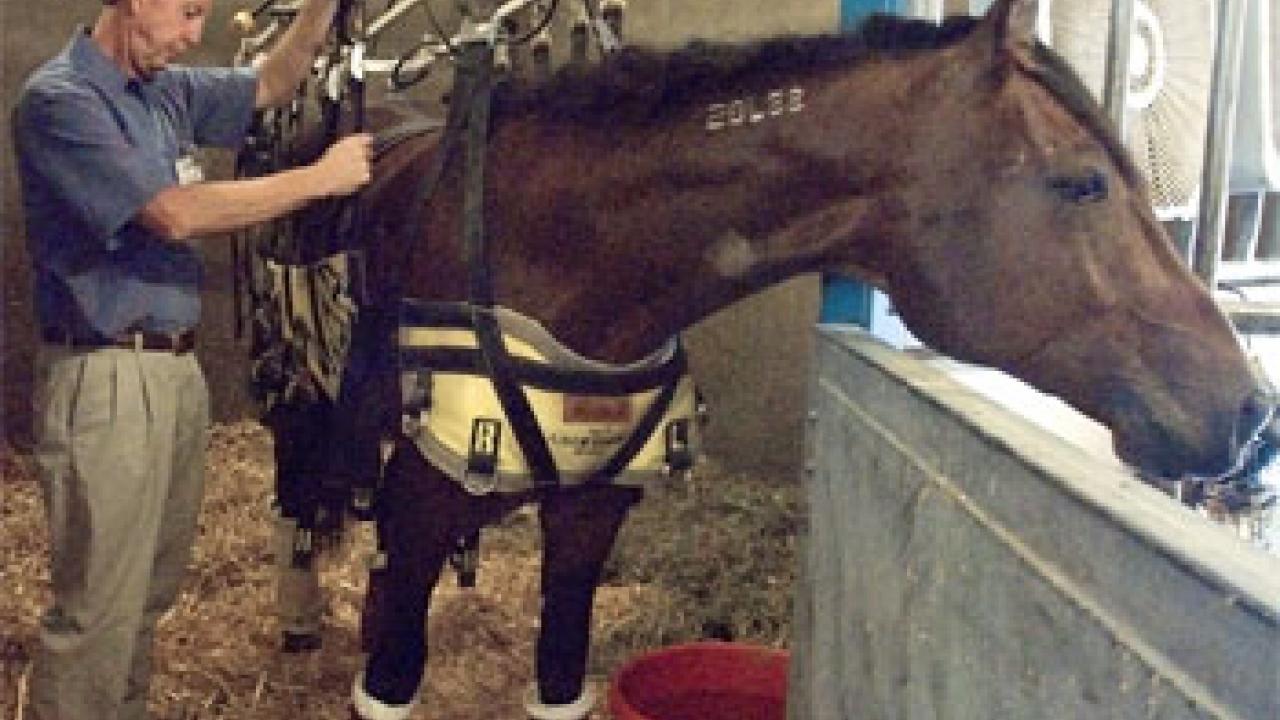As Kentucky Derby winner Barbaro fights to recover from life-threatening complications of an injury suffered during the May 20 Preakness Stakes, equipment developed at the UC Davis School of Veterinary Medicine is being put to work to help save the famous colt.
The ambulance and splint used to transport and stabilize Barbaro after his right rear leg broke in three places were developed by Gregory Ferraro, now director of the UC Davis Center for Equine Health within the School of Veterinary Medicine. Both the ambulance and splint, manufactured by Kimzey Welding Works Inc. in Woodland, Calif., grew out of the company's work in the 1970s and 1980s with Ferraro, who was then a racetrack veterinarian and president of the Southern California Equine Foundation.
The ambulance features a hydraulic system that lowers the door to the ground and a winch that can pull a stretcher and horse safely into the ambulance, as well as a movable wall that can gently squeeze a standing horse to support it during transport to a veterinary hospital.
When Barbaro's condition worsened, they turned to using a novel sling developed at UC Davis called the Anderson sling. This unique lifting device allows a horse to be supported, with the weight taken off the legs, and to sleep standing up. It was developed at UC Davis by John Madigan, an expert in emergency equine veterinary medicine at UC Davis in conjunction with welder Charles Anderson and Rich Morgan. The sling was designed for use to lift weak and injured horses and has found its way into veterinary clinics around the world. The system uses a rectangular metal frame, hoisted above the horse, with a unique support that comfortably lifts the horse by the skeletal system. It is now also commonly used to support horses following surgery or an injury, and to airlift injured horses via helicopter from remote locations.
"The sling has saved many horses that could not rise on their own or needed to be comfortably supported in the upright position while they recovered from an injury," Madigan said, noting that more than 100 modifications were made to the sling during its eight years of development at UC Davis. "It's gratifying to know that Barbaro is resting comfortably in our sling and can rest his injured leg."
"We hope that this type of work continues," Ferraro said. "We are still far from solving all of the problems associated with equine performance injuries."
Media Resources
Mitchel Benson, (530) 752-9844, mdbenson@ucdavis.edu
John Madigan, School of Veterinary Medicine, (530) 752-6513, jemadigan@ucdavis.edu
Gregory Ferraro, Center for Equine Health, School of Veterinary Medicine, (530) 752-6433, glferraro@ucdavis.edu
Lynn Narlesky, School of Veterinary Medicine Dean's Office, (530) 752-5257, lnarlesky@ucdavias.edu
